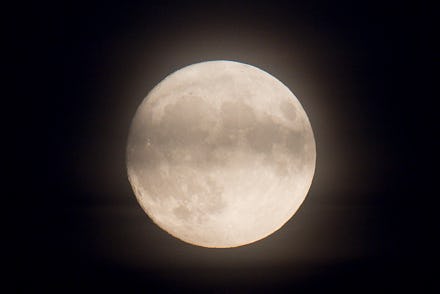Supermoon November 2016: Time, how to watch and best viewing spots for tonight’s full moon

A spectacular sight is in store for those who look up at the sky Sunday and Monday night, thanks to a historic supermoon. Tonight's supermoon will be the closest full moon to Earth since 1948, and those who miss out won't be able to see the moon this close again until 2034. Here's everything you need to know:
What is a supermoon?
The moon travels in an elliptical orbit around the Earth, meaning that at different points it may be either closer or farther away. At perigee, the moon's closest point to Earth, the moon is up to 14% (about 30,000 miles) closer to Earth than it is when it's at apogee, the point when the moon is farthest away. When the perigee combines with a full moon, it's known as a supermoon, which can be up to 30% brighter than an apogee full moon.
When to see the supermoon
The moon will be visible starting Sunday through late Monday night, but the best time to observe the supermoon will be the early hours of Monday morning. NASA notes that the moon will be at perigee at 6:22 a.m. Eastern, with the most spectacular sight coming when the moon becomes completely full at 8:52 a.m. Eastern.
I've been telling people to go out at night on either Sunday or Monday night to see the supermoon. The difference in distance from one night to the next will be very subtle, so if it's cloudy on Sunday, go out on Monday. Any time after sunset should be fine. Since the moon is full, it'll rise at nearly the same time as sunset, so I'd suggest that you head outside after sunset, or once it's dark and the moon is a bit higher in the sky. You don't have to stay up all night to see it, unless you really want to!
How and where to watch the supermoon
Just seeing the moon, of course, is as easy as going outside and looking up. But those hoping for a more spectacular supermoon view should keep a few things in mind. Avoiding light pollution or artificial light will make the moon appear brighter, and moongazers can use this Light Pollution Map to figure out what areas to avoid.
The supermoon will also appear the most spectacular when there's some sort of reference point to show how unnaturally large the moon appears. Just looking up to see the supermoon in the sky won't be as impressive as seeing it close to the horizon or against buildings or mountains, which NASA terms a "moon illusion." In a blog post on their website, NASA explains:
Hanging high overhead with no reference points to provide a sense of scale, one full moon looks much like any other.
To get this illusory experience, Science Alert suggests taking in the supermoon from an east-facing beach, somewhere with views of a city, near the mountains or close to an iconic structure. Once you've found the perfect spot, you can document your view using NASA photographer Bill Ingall's tips for photographing the supermoon and share your photos using the hashtag #NASAsupermoon.